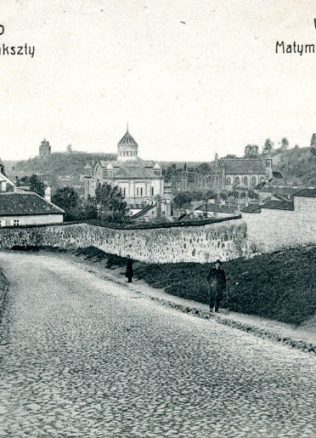Subačius Gate
In 1503 King Alexander Jagiellon granted a privilege to the residents of Vilnius to fortify the city with a defensive wall to repel the potential attackers, as at the beginning of the 16th century, the Grand Duchy of Lithuania was facing a growing military threat from Muscovites and Crimean Tatars. According to the privilege, the wall should feature five gates – all leading to the most important cities. However, in the middle of the 17th century, the city of Vilnius had 10 gates.
Subačiaus gate was built at the beginning of the 16th century. It was one of the most important gates of the town, leading to the towns of Polock, Smolensk, and Moscow. The Subačius gate was four stories high, protruded outside the city wall. Gate tower was used not only for defensive reasons and had heated living space inside it, where the city’s executioner lived. The Subačius gate had been demolished in 1801.
Learn more about executioners of Vilnius by clicking on this link.



